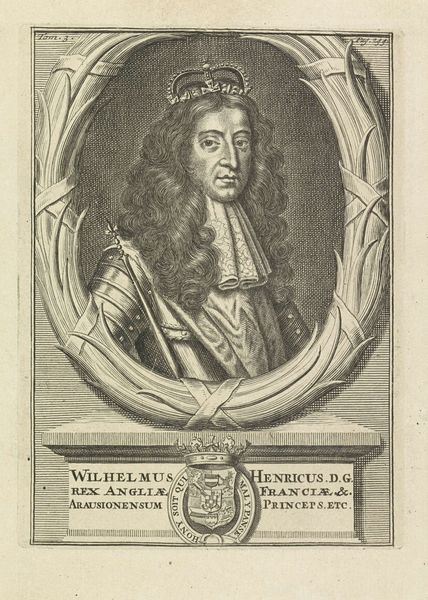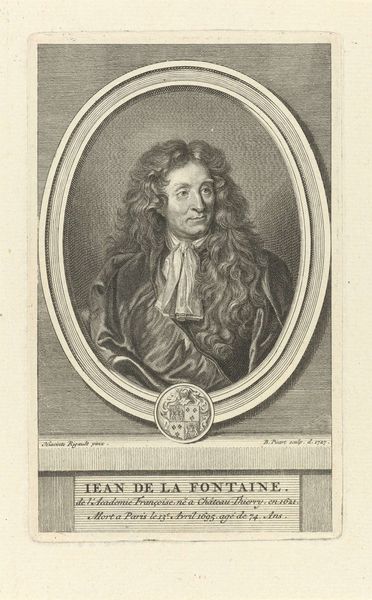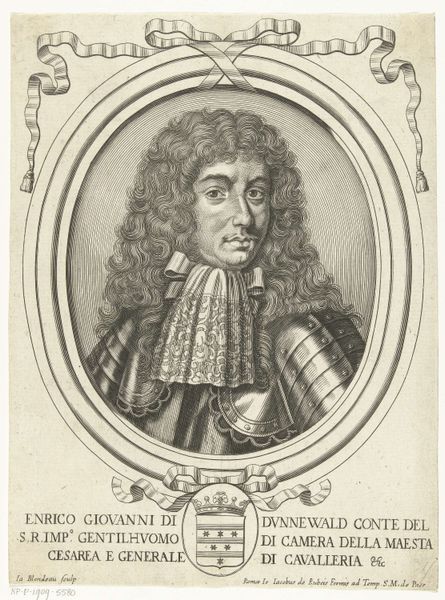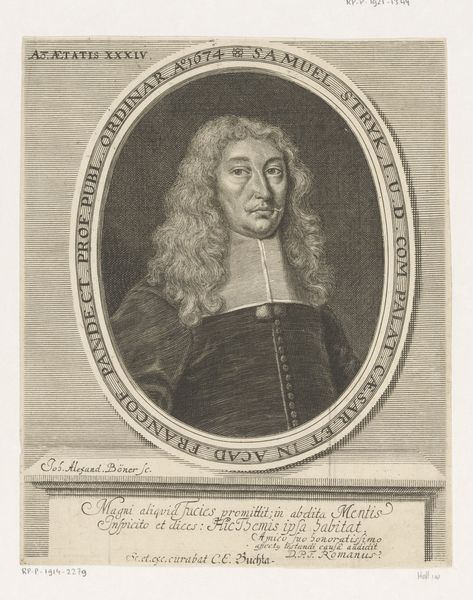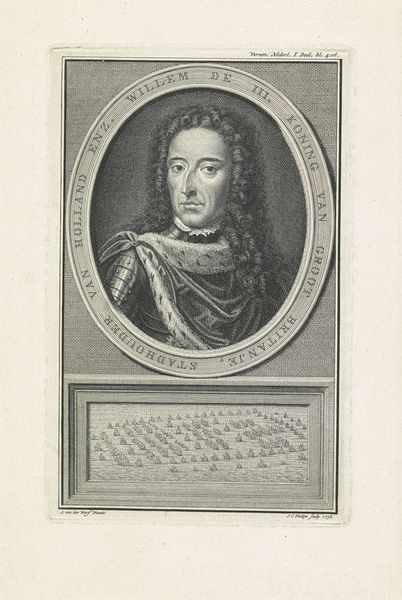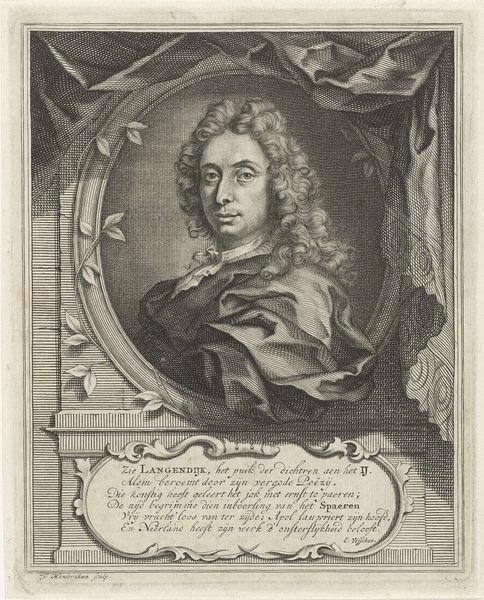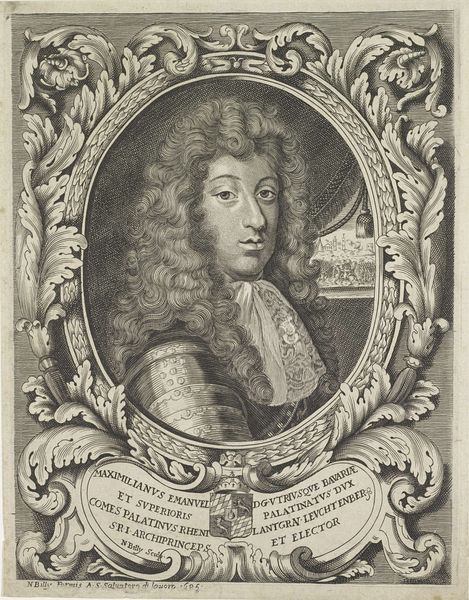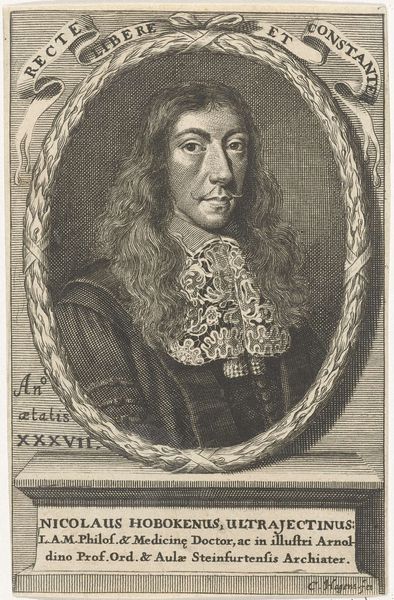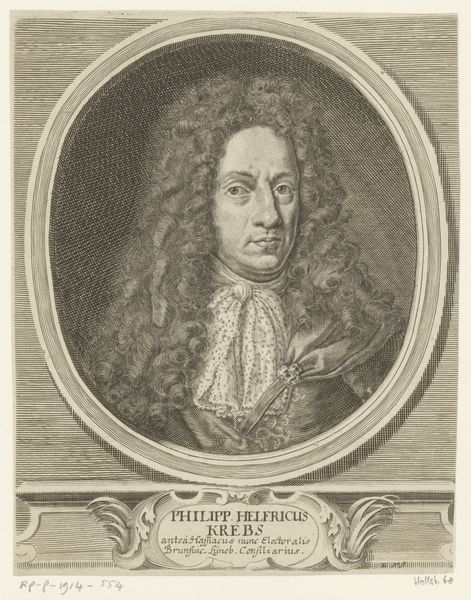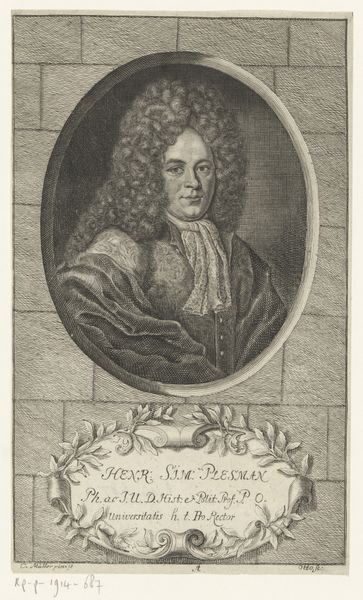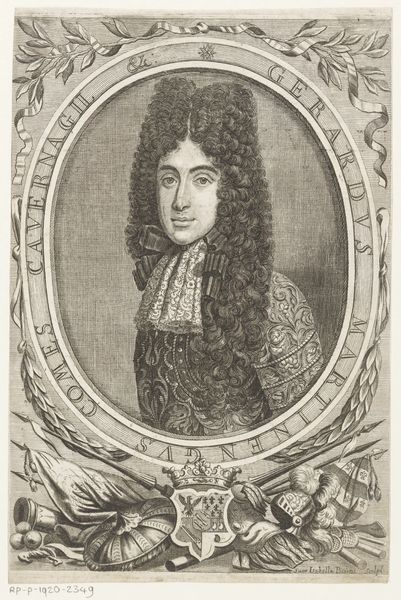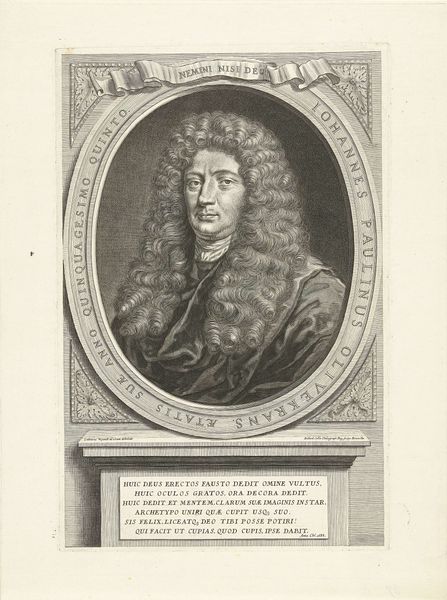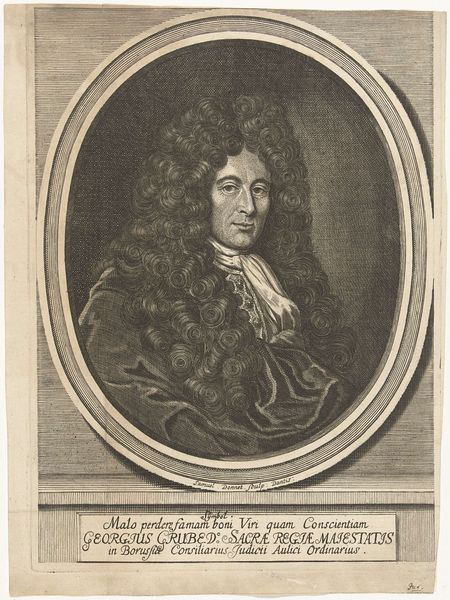
print, engraving
#
portrait
#
baroque
#
dutch-golden-age
# print
#
old engraving style
#
engraving
#
realism
Dimensions: width 96 mm, height 148 mm
Copyright: Rijks Museum: Open Domain
Curator: Here at the Rijksmuseum, we have "Portret van Cornelis de Witt," created between 1672 and 1731, crafted as an engraving by Pieter van Gunst. It captures a very stoic expression. What strikes you first about it? Editor: It's that tight circular frame, really. Makes it feel like peering through a historical keyhole. And there’s a somber quality to it. The lines are so precise, yet there’s this underlying weightiness in the sitter's gaze. Curator: It does have a serious mood. Van Gunst's use of the engraving technique is really remarkable here, allowing for incredible detail. Look at the intricacy of the lace collar and the rich textures he achieves with just lines. The whole thing whispers 'Dutch Golden Age.' Editor: Absolutely, it speaks to the era’s meticulous approach, a celebration of surface detail, if you will. Structurally, it's fascinating how the portrait within the oval contrasts with the rectangular inscription box below. A play of form for sure! I wonder what significance de Witt held at the time? Curator: De Witt was a significant political figure, a powerful, if ultimately tragic, statesman. Engravings like these played a crucial role in disseminating images of important figures, helping to shape public perception. Consider the inscription: "A Caesar in the field," so quite heroic indeed. Editor: So, we're seeing an effort to control the narrative through carefully constructed iconography. The formal realism combined with idealized inscription works as political theatre on paper. Do you think the portrait captures the "real" de Witt? Curator: Probably not entirely. It's an idealized representation, as you say. The engraving would likely smooth any imperfections, aiming for dignity and power rather than a raw, unfiltered likeness. What do you take away as you move on to the next piece? Editor: I leave pondering the relationship between public image and private identity and appreciating the formal skill, despite its propagandistic edge.
Comments
No comments
Be the first to comment and join the conversation on the ultimate creative platform.
